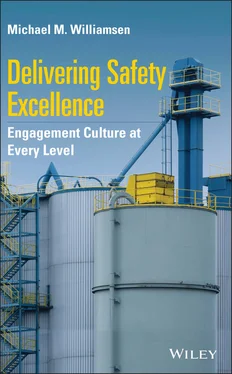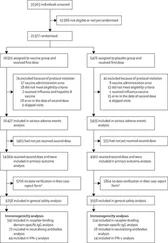The need for safety professionals will still be an integral part of our world's future and a part of many ongoing transformations. Just as our profession has transformed from 1911 to now, it will continue to transform with technological advancements. Different skill sets, technical knowledge, and cultural approaches will continuously be required. There will be a new kind of safety professional required to meet the demands of an ever safer future with technology implementation. This is just like the truth that there have been huge changes in the skill sets, talents, and abilities of safety professionals now compared to when our profession was launched more than 100 years ago. Fortunately for this next generation of safety professionals, we all stand on the shoulders of those who have gone before us; we do not have to reinvent what they did. Looking back at the last 100+ years of our safety profession accomplishments this has always been the case. The safety profession will not go away, but we will have to significantly adjust and transform to the tsunami of technological change. 1
How to go about this required transformation is the object of this book.
Much of the story line is anecdotal. However, it is also all based on real people and real happenings the author has experienced during his career of culture turnarounds for troubled organizations. The models contained in this book are meant to be thought provoking. There is underlying research behind them, but mostly they are the result of practical experiences of working with people who then begin to engage their own talents to identify the difficulties surrounding day‐to‐day life on and off the job and create needed improvements. There are some quotes from famous people including Albert Einstein, H.W. Heinrich, and Dr. Dan Petersen. However, they are not footnoted as this is a practical application book, not a text book. The author's objective has been to provide easily understandable visuals and context which will inspire hourly and salaried leaders to engage in and improve a culture that fixes problems and does not rely solely on fundamental initiatives which plateau way too soon (level 1 and level 2 tools explained later in this book, see Chapter 10). The author hopes this practical approach provides the inspiration, thought‐provocative material, and tools for you to go beyond a reactive condition solution mindset and into personal accountabilities and responsibilities. This different kind of safety tool set will assist you and your fellow workers to apply the efforts necessary to achieve a zero incident/zero at risk activity safety culture mindset and its resultant performance. The reader is encouraged to dig deeper into the works of these and other respected people. Indeed, all the material in this book has been presented at numerous global conferences, and thus is documented on the Web. As is common to professions, this same material has then been modified (and sometimes improved) by others. As you see items of interest to you, e.g. training, look at the reference provided and then expand your search to get a look at the greater depth that exists and is constantly changing. The information is out there and in this book, all you have to do is let it in as it applies to your individual interests and needs.
May you both enjoy and benefit from this work.
Sincerely, “The Doc”
1 1 Industrial Safety & Hygiene News, September, 2017, Vol 51, No. 9, p. 88.
While I (the author, Mike Williamsen, PhD) was growing up my Papa was an hourly welder in the shipyards. At the end of each day he was bone tired and sometimes injured. I remember his wrist surgery, back surgery and a day when he went to an eye doctor who used a magnet to remove some weld slag from his eye. I never remember him complaining and yet his work‐related difficulties made an impression on me. My mom and Papa lived through The Depression together. They never went to college, but both had the superb work ethic they needed to survive the many difficulties of their era. After I got a degree in chemical engineering from the University of California, I went to work in a petroleum refinery and then in an agricultural chemical facility. One of the important lessons I learned in the field of chemical engineering was the approach of focusing on Unit Operations . In both the classes and laboratories we focused on an individual unit operation, e.g. heating, pumping, distillation, etc., and then tried to optimize all the steps used in that process/unit operation. The unit operation analogy in safety could be something like how to be safe while working at heights, painting, lifting, handling hazardous chemicals, etc.
During my second job after graduation I discovered my interest lay in management rather than research or design. My wife agreed for me to go back to school and get an MBA thus better preparing me to go into the management ranks. My post MBA industrial life became one of turnaround work for the various organizations and industries who employed me. In one industry I was in charge of manufacturing engineering for a Fortune 20 company. In this role I was enjoying the endless challenges of working with plant and headquarters personnel as our small Continuous Improvement (CI/kaizen) teams significantly improved uptime and productivity for the 40 facilities I supported across the United States. In this role I made sure each small team used the unit operations approach of focusing on a single process such as: baking, frying, drive trains, logistics, and the like, and optimizing each step used in that particular process.
Suddenly one Tuesday my boss, Tom, told me about a fatality which had just occurred at one of the facilities. As two senior vice presidents were about to enter the plant, a lady violated a cardinal safety rule and entered an operating crane bay. While focused on her clean up tasks, the crane cycled and crushed this 38‐year‐old mother of three young children. The entire corporation was shocked. As they looked into their records they confirmed an even more shocking history of fatalities, dismemberments, and other serious injuries, which in the past had seemingly been accepted as injuries being an inevitable part of the manufacturing culture. Management prided themselves in being number one in their industry with respect to cost, quality, and customer service, and yet we were in the bottom third of our industry worldwide when it came to injury statistics. A decision had been made at the top that safety would become a measurable, compensable metric for management along with all the traditional measures of cost, quality, and customer service. That decision included that the safety metric must be brought up to world‐class performance just like the others which were tracked. At issue was the fact that over the years upper management continually emphasized the company was a fun place to work. If this were so, the killing and maiming of employees must stop. After all, it was the frontline employees who produced the product which paid all of our salaries. With that crescendo, it had been decided I was to be in charge of safety for the corporation (of course in addition to my regular manufacturing engineering duties and at no additional pay). There were no restrictions on me or what it cost to accomplish this strategic goal of becoming world class in safety performance, though no one could define what world class was.
What a challenge: 10 000 manufacturing employees, 40 facilities strung across the United States, no safety staff anywhere, and only a reactive approach to the latest injury, no matter how serious it might be. I remember thinking “What am I doing in this role? I am an engineering manager, not a safety guy!” As I talked this over with my Papa one night, I distinctly got the vision I was embarking on a journey to save and improve the quality of lives of the likes of him and my mom. And I was all in!
Читать дальше












